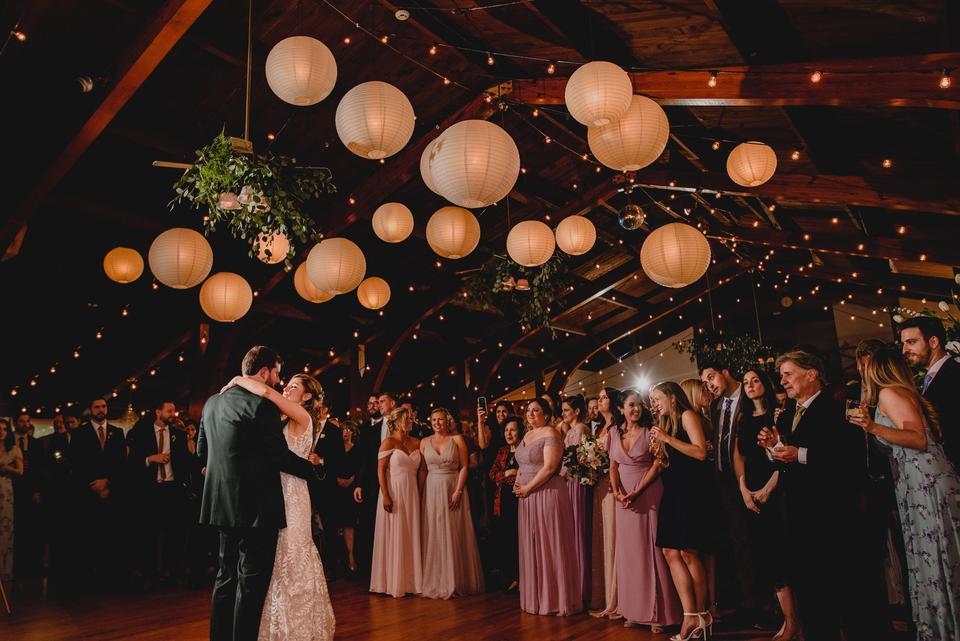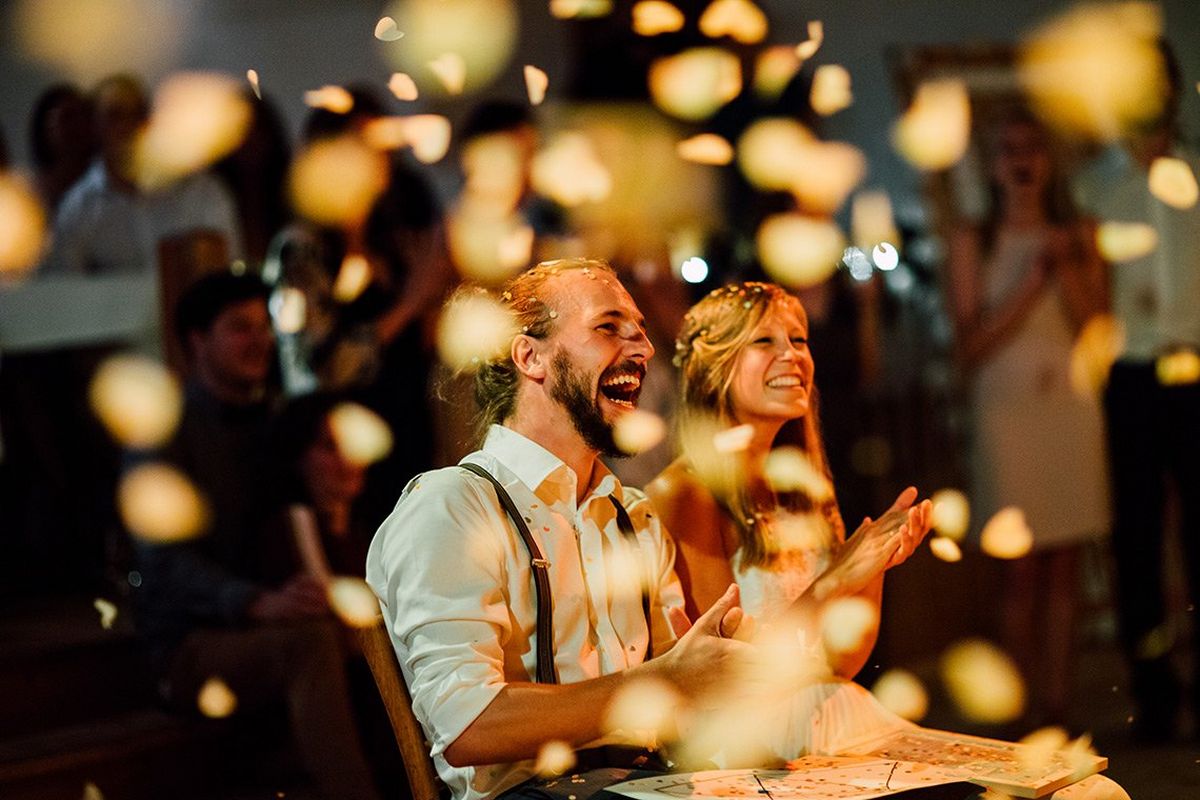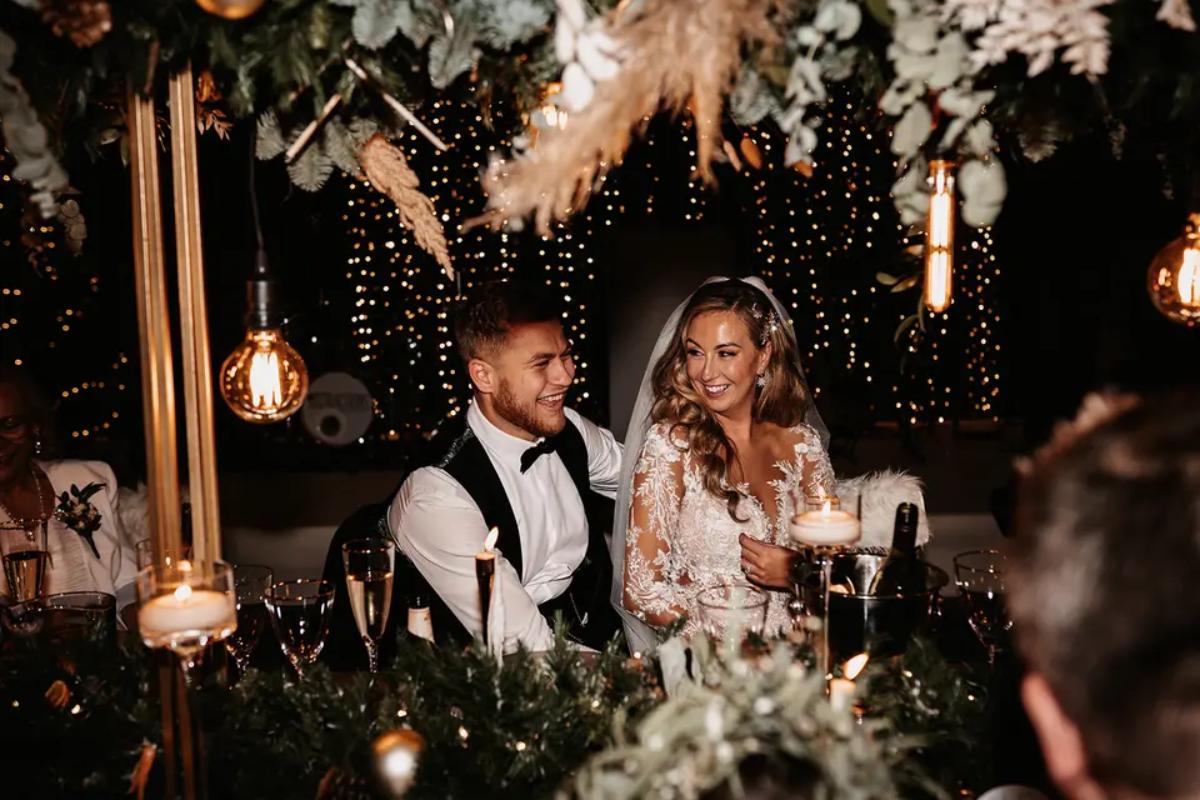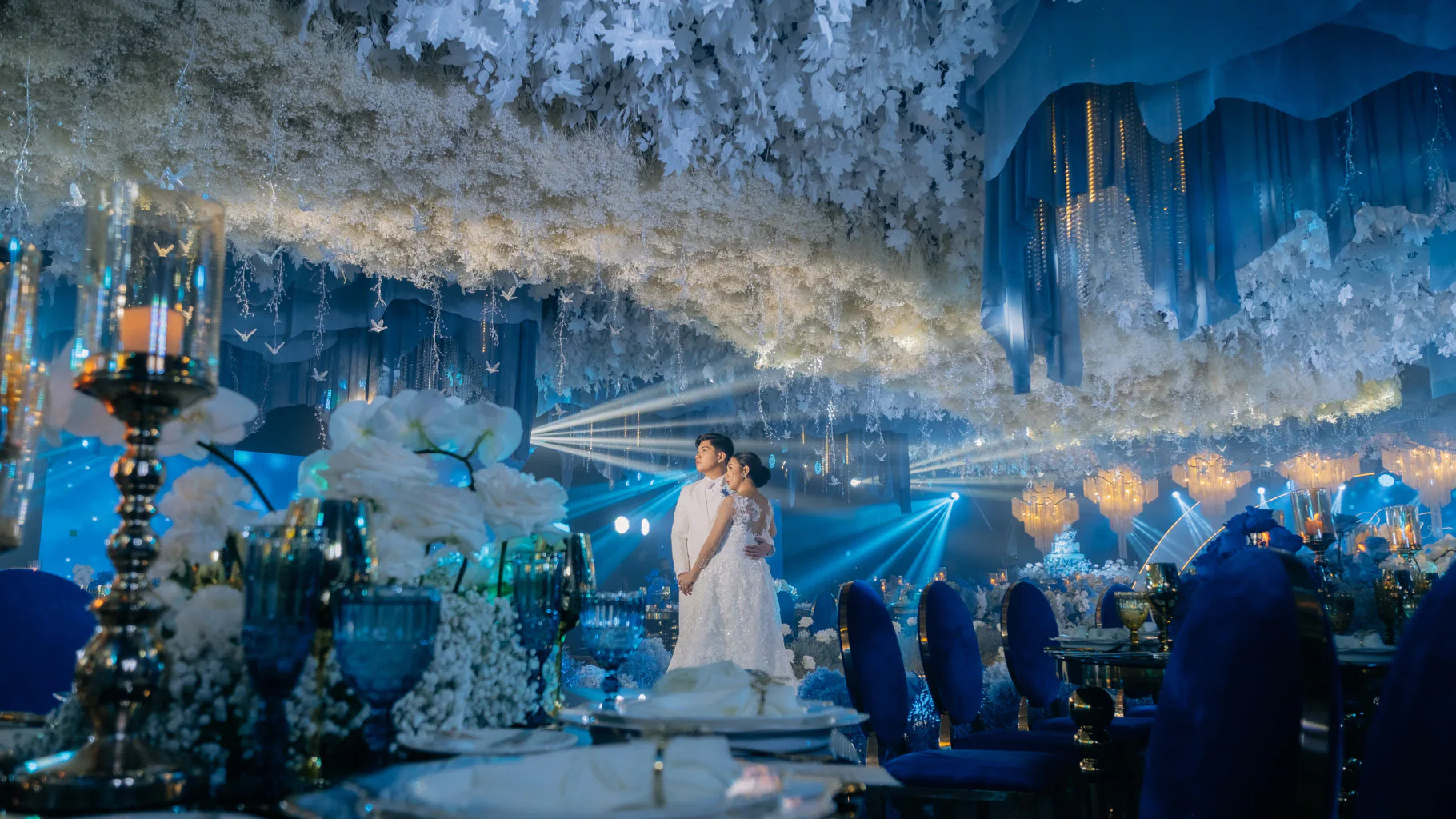Credit: Khim Cruz Photography
Let’s dive into the world of wedding reception lighting setup – where technical expertise meets creative vision. After photographing hundreds of receptions in venues ranging from dimly lit barns to grand ballrooms, I’ve learned that mastering reception lighting can transform ordinary photos into extraordinary memories.
Understanding Reception Lighting Challenges
 Credit: Wedding Wire
Credit: Wedding Wire
Wedding reception lighting setup isn’t just about brightness – it’s about creating dimension, mood, and consistency throughout the event. Each reception venue presents unique challenges, from competing color temperatures to challenging architectural features. Success lies in developing a flexible system that adapts to any situation.
Core Lighting Equipment Strategy
A comprehensive wedding reception lighting setup begins with carefully chosen equipment that balances power, portability, and reliability. Your essential kit should include:
- 3-4 quality speedlights with radio triggers
- 1-2 continuous LED panels for constant light needs
- Sturdy light stands with sandbags
- Various light modifiers and diffusers
- Color correction gels
- Ample backup batteries and units
The key is not just having this equipment, but understanding how each piece works together to create your desired lighting effects. Quality light stands with sandbags are non-negotiable for safety and stability, especially in venues with active dance floors and moving guests.
Strategic Light Placement
The secret to effective wedding reception lighting setup lies in thoughtful positioning. For consistent results, consider these key positions:
- Main Light: 45 degrees to the dance floor for primary illumination
- Fill Light: Opposite the main light to soften shadows
- Rim Light: Behind the action for depth and separation
- Optional Background Light: For architectural features or additional depth
This configuration creates a versatile lighting ecosystem that adapts to various reception scenarios while maintaining consistent, professional results.
Camera Settings for Reception Coverage
Understanding how your camera interacts with your wedding reception lighting setup is crucial for consistent results. Start with baseline settings that give you flexibility while maintaining image quality. In most venues, an ISO range of 1600-3200 provides a good balance between light sensitivity and noise control. Apertures between f/2.8 and f/4 offer enough depth of field for small groups while allowing for creative shallow depth effects when desired. Shutter speeds typically range from 1/60 to 1/200, depending on the action and available light.
Flash Integration Techniques
Mastering flash settings transforms good photos into great ones. TTL (Through The Lens) metering works wonderfully for unpredictable moments when you need to react quickly. Switch to manual power settings when you need absolute consistency, such as during formal dances or speeches. High-speed sync capabilities open up creative possibilities for dramatic portraits, while rear-curtain sync adds dynamic motion effects to dancing shots.
Creating Depth in Your Images
 Credit: Canon Europe
Credit: Canon Europe
A well-planned wedding reception lighting setup creates images with true dimensional quality. The key lies in thoughtful light placement and power control. Position a light to create subtle lens flare or highlight foreground elements, drawing viewers naturally into the image. Effective rim lighting becomes crucial for separating subjects from dark backgrounds, especially during pivotal moments like first dances. Don’t forget to illuminate key architectural features of the venue – these details provide context and create more engaging compositions.
Managing Mixed Lighting Environments
Modern wedding venues present increasingly complex lighting challenges. Your wedding reception lighting setup needs to work harmoniously with various light sources you’ll encounter. Most venues now incorporate uplighting, while DJs bring their own array of moving lights and effects. Factor in ambient window light during sunset hours and various decorative lighting elements like string lights or chandeliers. Success comes from embracing these elements rather than fighting them – let them become part of your creative palette.
Adapting to Different Reception Phases
Every wedding reception flows through distinct phases, each requiring its own lighting approach. During dinner service, aim for subtle, flattering light that enhances the ambiance without disturbing guests. Position your lights higher and employ broader diffusion for soft, natural-looking illumination that complements conversation and dining.
When it’s time for speeches and toasts, ensure even lighting across the speaker area while maintaining good exposure for reaction shots. The first dance transforms your wedding reception lighting setup into a tool for creating drama and emotion. Design your lighting to separate the couple from the background while maintaining enough ambient light to preserve the venue’s atmosphere.
As the dance floor opens up, transition to more dynamic lighting patterns. You’ll need increased power to freeze action, strategic backlighting for defining effects, and potentially some color manipulation to complement the DJ’s lighting design. This progression through the evening requires constant awareness and subtle adjustments to your lighting scheme.
Troubleshooting Common Challenges
 Credit: Hitched
Credit: Hitched
Dark venues present some of the most demanding tests of your wedding reception lighting setup. When faced with particularly challenging spaces, consider increasing your ISO strategically while maintaining image quality. Bounce flash techniques can help create softer, more natural-looking light, while strategically placed LED panels provide consistent fill light throughout the space. Sometimes, simply finding ways to incorporate more ambient light capture can make a significant difference in your final images.
Larger spaces require their own approach to wedding reception lighting setup. More powerful flash units become essential, as does careful consideration of light positioning and distance. Creating distinct zones of coverage helps maintain consistent lighting throughout the space, while keeping your setup mobile enough to adapt to the evening’s flow remains crucial.
Advanced Lighting Techniques
The true art of wedding reception lighting setup emerges when you begin crafting mood and atmosphere through light. Rim lighting can create dramatic separation and depth, while thoughtfully applied colored gels open up creative opportunities that complement the venue’s ambiance. Pattern projection adds interest to otherwise plain backgrounds, and light painting techniques can yield unique portraits during quieter moments.
When working with multiple photographers, coordination becomes essential. Establish clear primary and secondary lighting zones, and use different radio channels to prevent interference between systems. Develop clear movement patterns to avoid crossing lights, and create a shared plan for backup equipment access. This collaborative approach ensures comprehensive coverage while maintaining lighting consistency.
Equipment Care and Maintenance
A reliable wedding reception lighting setup depends on meticulous equipment care. Develop a regular testing routine for all components, implement a systematic battery management approach, and maintain organized backup equipment. Post-event cleaning and inspection help identify potential issues before they become problems during crucial moments.
Final Thoughts
A successful wedding reception lighting setup requires both technical knowledge and artistic vision. Practice these techniques before the big day, and always have backup plans for equipment failures. Remember, your goal is to enhance the natural joy and energy of the reception while creating beautiful, lasting images.
The best wedding reception lighting setup is one that becomes second nature, allowing you to focus on capturing moments rather than adjusting equipment. Keep learning, experimenting, and refining your technique with each event. Your dedication to mastering reception lighting will show in the stunning images you create for your couples.









